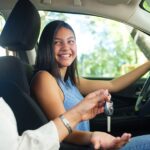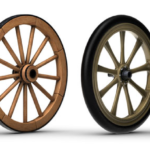Owning a 4×4 vehicle opens up a world of adventure and exploration, but it also comes with its own set of challenges. Off-road driving can push your vehicle to its limits, leading to wear and tear that requires regular attention. While some 4×4 issues can be handled with a bit of know-how, others may require the assistance of a professional.
In this guide, we’ll cover 10 of the most common problems 4×4 owners encounter and offer solutions to keep your vehicle running smoothly, whether you’re cruising on the highway or tackling rough terrain.

Content
1. Transmission Problems
Transmission issues are common in 4×4 vehicles, especially for those that frequently shift between high and low gears or go off-roading in difficult conditions. Signs of transmission problems include difficulty shifting gears, slipping gears, or strange noises.
These issues can be caused by anything from low transmission fluid to more serious internal damage. If you notice any of these signs, it’s essential to seek professional transmission repair to prevent further damage and ensure your vehicle remains safe to drive.
2. Overheating
Off-roading can place extreme demands on your engine, leading to overheating if the cooling system isn’t functioning properly. Common causes of overheating include a faulty thermostat, a broken radiator fan, or low coolant levels.
If you notice your engine temperature gauge creeping into the red zone, stop driving immediately to avoid permanent engine damage. You can often prevent overheating by checking your coolant levels regularly and ensuring your cooling system is properly maintained.
3. Brake Wear
4×4 vehicles often experience brake wear faster than regular cars due to the heavier loads they carry and the challenging conditions they face. Off-roading on steep inclines or rugged terrain puts a lot of strain on your brakes, leading to wear and tear.
Signs of brake problems include squeaking or grinding noises, a soft brake pedal, or a longer stopping distance. If your brakes are showing these signs, it’s time to have them inspected and potentially replaced to ensure your safety.
4. Suspension Issues
Off-roading subjects your suspension system to a great deal of stress, which can lead to worn-out shocks, struts, and other components. If your 4×4 feels rougher than usual when driving or if the vehicle leans to one side, your suspension system may need attention.
Regularly checking your suspension system and replacing worn components can help you avoid bigger issues down the road.
5. Differential Problems
The differential plays a critical role in transferring power from the engine to the wheels, and it’s particularly important in 4×4 vehicles. Common signs of differential problems include whining noises, vibrations, and difficulty turning.
Differential problems can be caused by low fluid levels or worn-out gears. Make sure to regularly check and replace your differential fluid to prevent damage and keep your 4×4’s drivetrain functioning smoothly.
6. Tire Wear and Alignment Issues
Off-road driving puts extra strain on your tires and can lead to uneven wear or misalignment. Uneven tire wear not only reduces traction but can also make your vehicle harder to control.
Regular tire rotations and alignments will ensure your tires wear evenly and provide optimal performance. Be sure to check your tire pressure regularly as well, as under-inflated or over-inflated tires can contribute to uneven wear.
7. Driveshaft Problems
The driveshaft is responsible for transmitting power from the engine to the wheels, and off-roading can put extra strain on this component. Common signs of driveshaft problems include clunking noises when shifting gears or difficulty accelerating.
Driveshaft issues can often be prevented by regularly inspecting the universal joints (U-joints) for wear and keeping them properly lubricated.
8. Transfer Case Failures
The transfer case allows your 4×4 to switch between two-wheel drive and four-wheel drive, and it’s subjected to a lot of stress during off-road driving.
Transfer case problems can manifest as difficulty engaging or disengaging 4WD, grinding noises, or fluid leaks. Regularly checking your transfer case fluid and ensuring that the system is properly lubricated will help prevent these issues.
9. Electrical Issues
Off-road driving can cause electrical problems due to water, dirt, and dust getting into sensitive components. Common electrical issues include faulty sensors, intermittent power, or problems with lights and accessories.
To prevent electrical problems, regularly inspect your wiring harness for signs of wear or damage and ensure that all electrical components are properly sealed and protected from the elements.
10. Fuel System Failures
Off-roading on rough terrain can lead to damage to your fuel system, such as a punctured fuel line or a clogged fuel filter. If you experience difficulty starting your vehicle, loss of power, or stalling, your fuel system may be the culprit.
Regularly inspecting your fuel lines and replacing your fuel filter can help prevent these issues and ensure your engine gets the fuel it needs.
Summary
In summary, owning a 4×4 vehicle requires regular maintenance to keep it in top shape, especially if you’re an off-road enthusiast. Being aware of common 4×4 problems—such as transmission issues, brake wear, and differential problems—can help you catch issues early and prevent more costly repairs down the line. Whether you’re tackling tough terrain or just commuting to work, staying on top of these potential issues will help keep your 4×4 running smoothly and safely.

Max isn’t your ordinary auto blogger. He’s your friendly neighborhood gearhead, here to guide you through the automotive maze. His blog is like a conversation with a buddy who’s always got the latest auto scoop.












